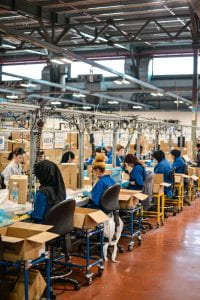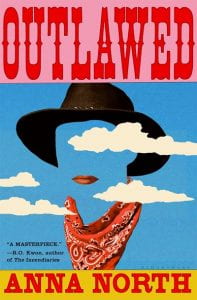Informed by Robinson’s presentation, think about the influences upon a school – structural, cultural and societal and identify a key driver for change in each area that the teacher librarian could respond to through school library programs.

Photo by Remy Gieling on Unsplash
The British educational theorist Ken Robinson and his ideas regarding systems and structures of education – and how they fail 21st century children – are well known. Anyone working in a school knows that the disengagement and distractions of students – and the disrespect that seems to come with it – is a problem, and that our educational model doesn’t fit all. In Australia, we have the (probable) consequence that our educational attainment measures – such as NAPLAN and the PISA ranking – show that our students are struggling.
I wonder if, in our desire to embrace so many different pedagogical theories, and in drastically expanding the role and responsibilities of teachers, we have become fragmented and overwhelmed by options and choice. They do say that too much choice is actually a negative (is this a structural, cultural or societal influence? It can be hard to separate them!).
Similarly to Robinson, Paulo Freire famously theorised (and challenged) the concept of ‘banking education’, the idea that teachers/adults possess the knowledge and they deposit it in children’s heads (because, y’know, their heads are empty otherwise). This aligns with the factory structure of schooling that Robinson talks about. To be honest, you can see where the comparison comes from, and why it developed that way: efficiency. Anyone who has taught others would know that it’s pretty straightforward instructing a homogenous group, where the learners are of the same ability level, similar background, and non-neuro-divergent. Though also quite boring. And for the longest time, our schools ignored difference, forced left-handed kids to write with their right hands, and offered little extra support for anyone struggling.
Absolutely the historical traditions of pedagogy still influence schools. There have been plenty of ‘experiments’ led by departments of education in an effort to ‘fix’ the system – especially to engage those students for whom the mainstream school system doesn’t work. Many of these are well-funded and make for good ‘announceables’, meaning that a Minister for Education can look good on the news and then quietly let it all slip into obscurity when the data doesn’t show it’s helping.
Yet the Teacher Librarian (TL) is in an ideal position to support new initiatives precisely because they don’t have a rigid curriculum to follow: they can be more flexible, more adaptable, and offer a more personalised approach to student wellbeing than teachers often can (due to large class sizes, time pressures, expectations etc.). The TL – and the library – are well-placed to help with student wellbeing, which is a current social issue dominating Tasmanian schools.
There are major problems with our school system, and serious challenges. No one really seems to know how to fix them, because they’re bigger than schools. And many schools in Tasmania no longer even have a library, let alone a TL. We are floundering, the education department is adding more to our plates, and one societal influence that is occasionally discussed is the growing anxiety among young people – climate change, job insecurity, housing unaffordability, health concerns etc. With so many anxious young people, it’s really not surprising that they’re educational scores are dropping, the older they get.
Certainly a lot has changed in schools, even since Robinson’s talk (his reference to an ADHD epidemic doesn’t really fit an Australian context, and he doesn’t offer any analysis of the reasons why diagnoses increase across the eastern states – but it aligns fairly well with an increase in parental involvement and ambition, class and wealth. Getting a diagnosis is expensive, after all). In Australia, one of the big influences on schools is the notion of ‘choice’, and the growing class divide. Pasi Sahlberg’s essay “By design: New foundations for teaching and learning” in the Griffith Review is enlightening and brings a lot of strands together. In Australia, structural issues must include this incredible funding divide we have here, which only exacerbates class tensions.
Robinson describes the earlier understanding of people’s abilities as being either academic or non-academic, which is still a polite way of saying ‘dumb’ (but shouldn’t be). Sahlberg’s essay explains how providing parents with choice – and politicians encouraging them to ‘shop around’ (thus treating education/schools like a consumer product) is a major part of the problem. The other is our emphasis on ‘excellence’. We end up having to teach to outcomes, rather than skills – even though our Australian curriculum is skills-oriented. The recent push to collect data, and be ‘data-driven’, only adds to this.
Regardless of the type of school, the school library can and should be a neutral space, welcoming to all, not just so-called academic students. It can, through fun and engaging programs and resources, be an inviting space that may help students engage better in school. But to ensure that a school maintains the TL role – and its library – the TL must exercise leadership skills. I see this leadership role as a way of connecting the TL to every facet of the school: to be indispensable. Not as a power-hungry move, but to be able to perform the role as it is intended and to achieve the best outcomes. It’s a win-win, really.
References
Robinson, K. [RSA Animate]. (2010, October 14). Changing education paradigms [Video]. YouTube. https://www.youtube.com/watch?v=zDZFcDGpL4U
Sahlberg, P. (2022). By design: New foundations for teaching and learning. Griffith Review 75. (pp. 84-97)

















Recent Comments
shannon.badcock
"Yes I wondered/worried about that. I find it hard to separate it from ..."
ederouet
"What a great looking blog! I love your widgets and use of categories ..."